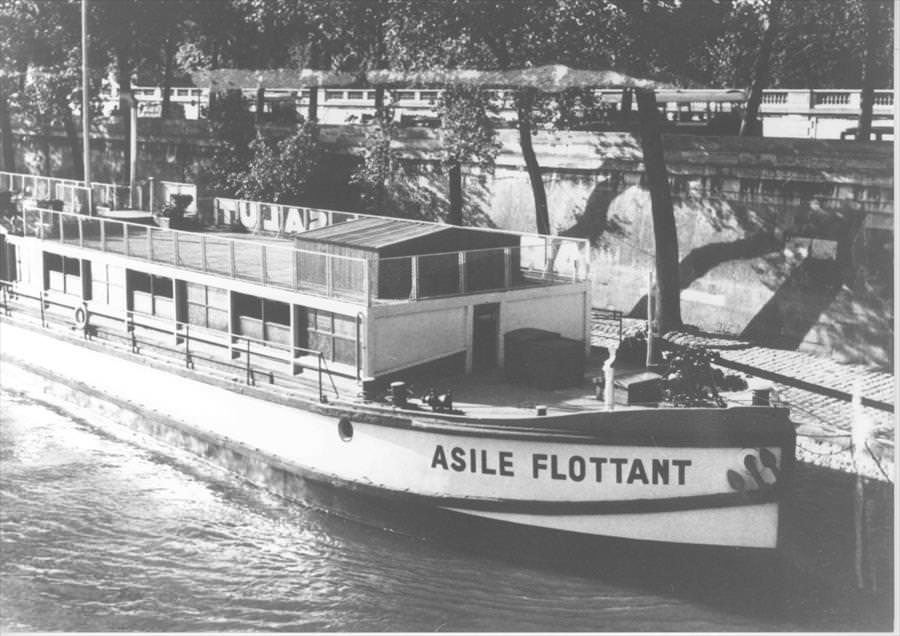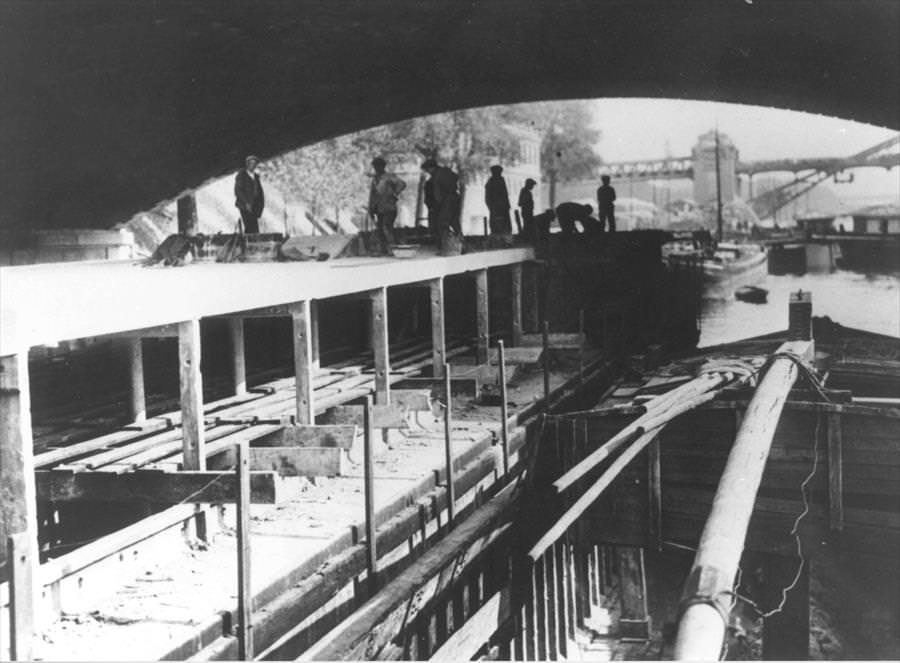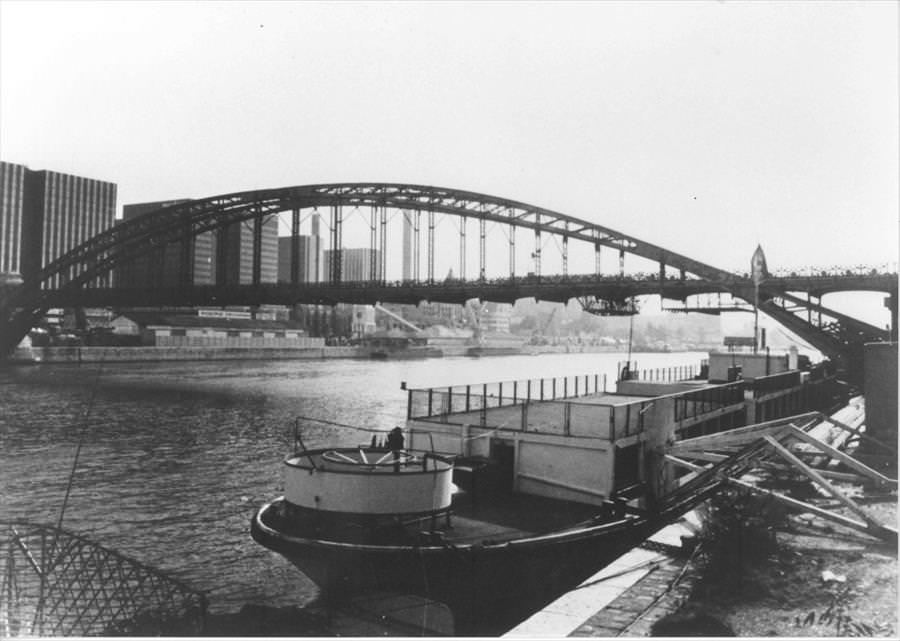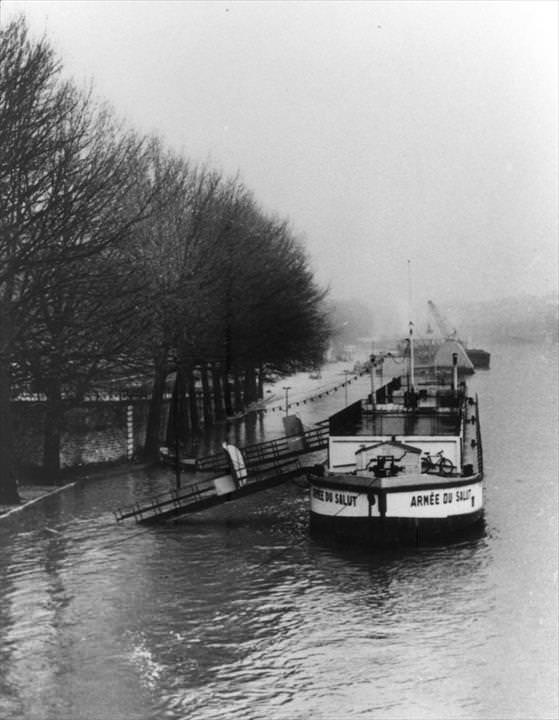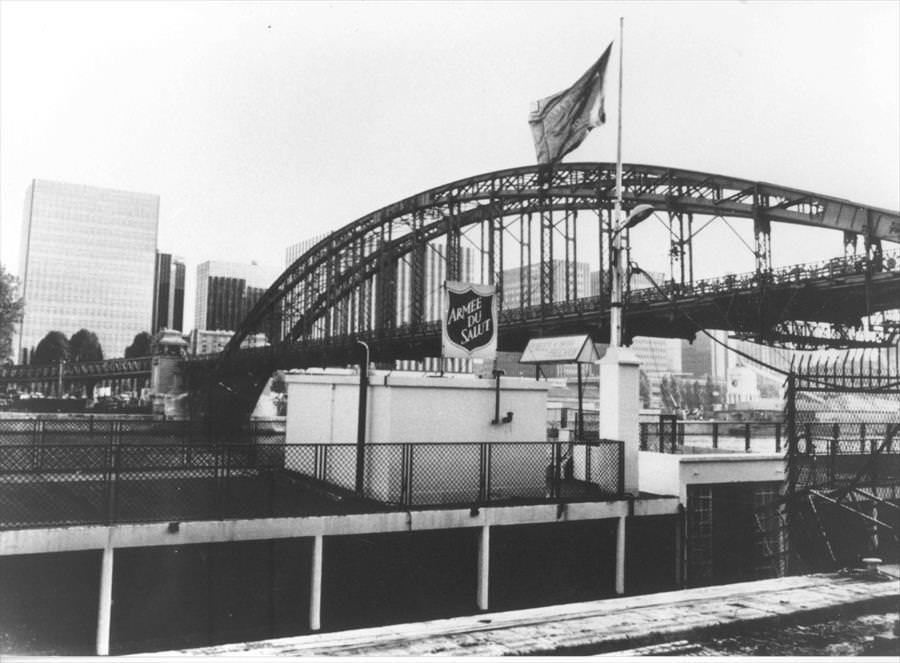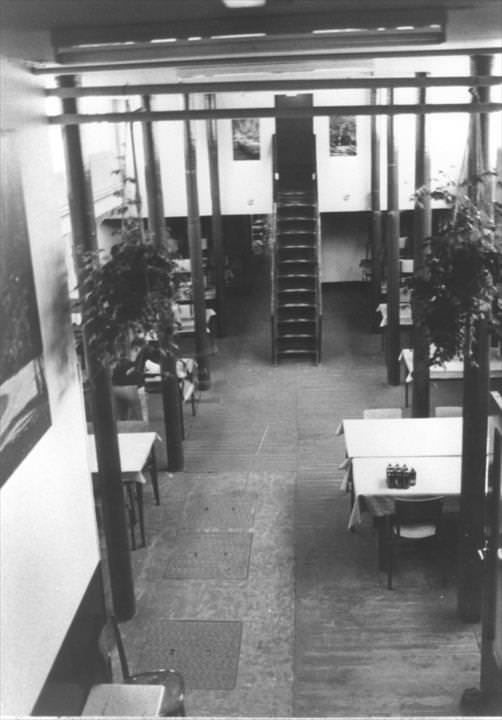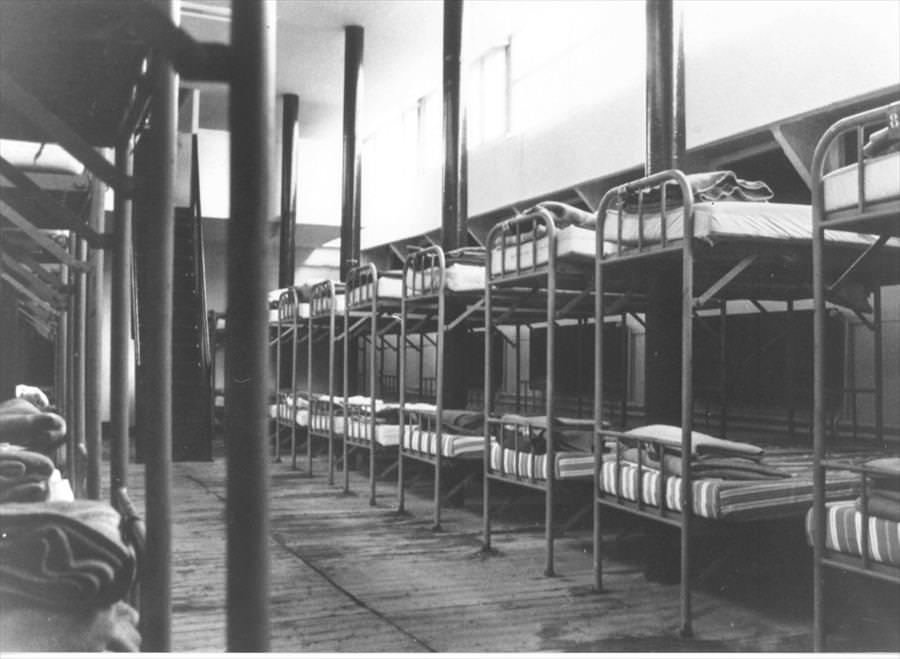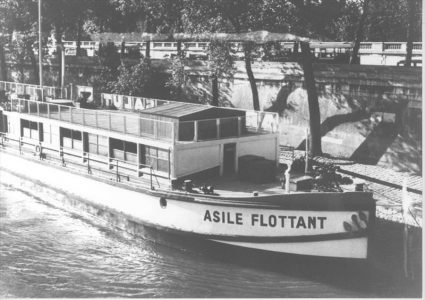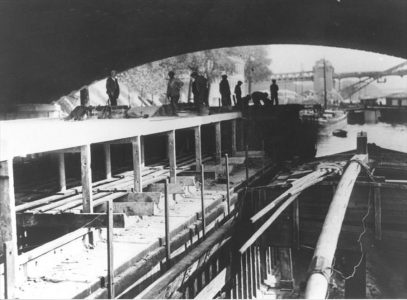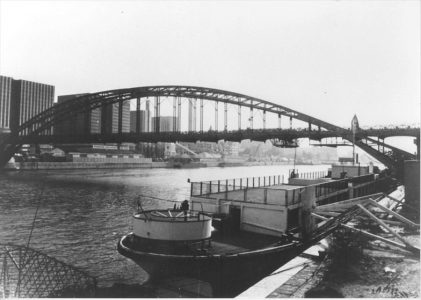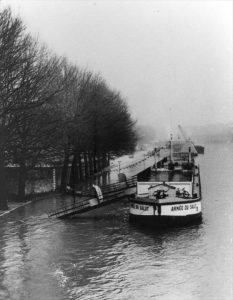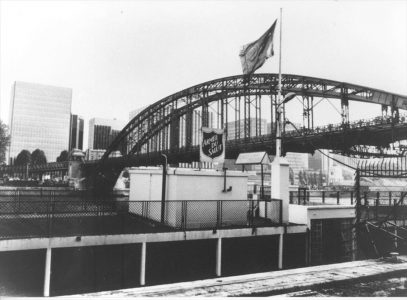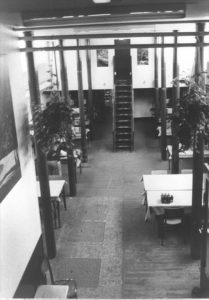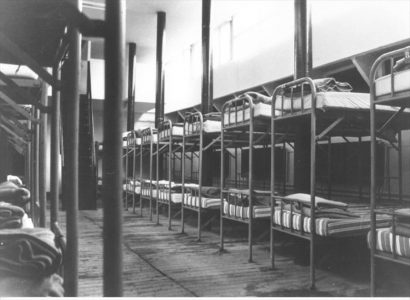Floating Refuge (Louise-Catherine Canal-Boat)
Paris, France, 1929
Commission
What is inaccurately described as a péniche (canal-boat) was originally a chaland (lighter) in reinforced concrete, with no independent means of navigation, the Liège, hastily built in 1919 to convey coal from Rouen to Paris. From its rehabilitation to its shipwreck, the Louise-Catherine project occupied an important place in Le Corbusier’s work and he devotes several pages to it in L’Architecture Vivante and in the second volume of his Œuvre Complète (1929-1934).
This was the second of the projects entrusted to Le Corbusier and Pierre Jeanneret by the Salvation Army, after the dormitory of the Palais du Peuple. It was to be followed by a final, more ambitious project, that of the Cité de Refuge.
The commission was for the rehabilitation of a lighter 70 metres long and 8 metres wide, which had long been abandoned. The idea was to convert this barge built in reinforced concrete into a refuge structure for 150 homeless Parisians. The architect’s interest was aroused not only by the unusual nature of the project, but also by the challenge inolved in this refurbishing work.
It was the philanthropist Winaretta Singer, Princesse de Polignac, who co-financed the project, imposing Le Corbusier, whom she deeply admired, as project manager. Madeleine Zilhardt, another sponsor of the project, named the vessel Louise-Catherine, in homage to her friend the painter Louise-Catherine Breslau.
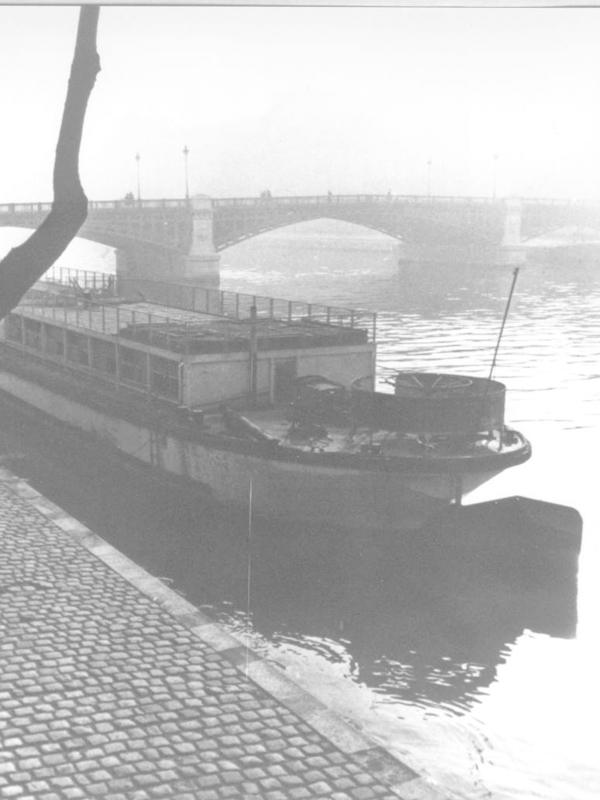
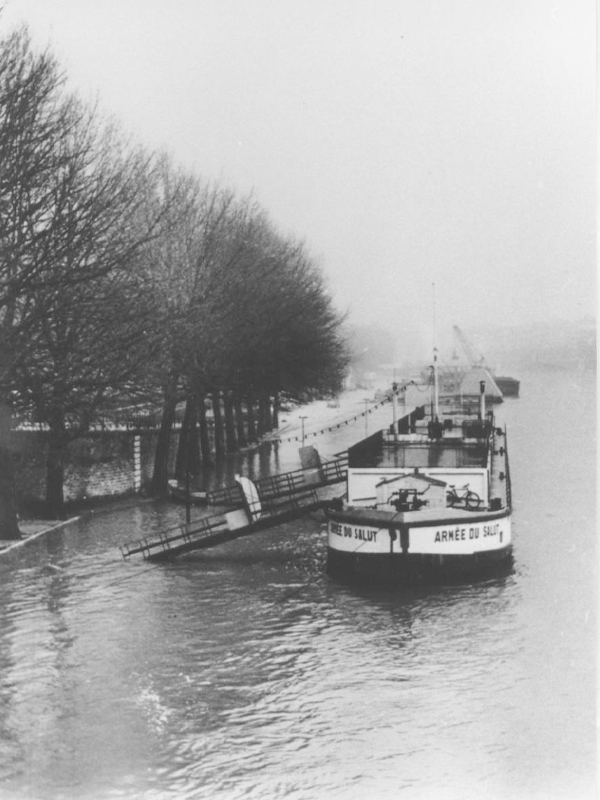
Project
In addition to raising its height, necessary to increase the vessel’s capacity but also to provide the ventilation and natural light craved by Le Corbusier, the planned conversion included the provision of a dormitory equipped with bunk beds, a refectory, a kitchen, toilets and two apartments for staff. A roof terrace was also created on the bridge, intended to accommodate benches as well as plant boxes and described by Le Corbusier as “a hanging garden on top of the barge”.
Beyond its role as a winter shelter, the floating refuge, moored along Quai du Louvre, was moved during the summer to accommodate youth summer camps (Le Pecq or Charenton-le-Pont), until 1940.
At that time, it was moved to Quai des Tuileries, then to Quai Saint Bernard between 1950 and 1980, before finally being moored at Quai d’Austerlitz.
The interior of the boat was structured by a double row of concrete posts cast in Eternit pipes, which acted as pilotis to support the deck. Le Corbusier’s work was resolutely modernist and he was keen to apply his five points of modern architecture. The space was divided into three main parts: in the stern a 64-bed dormitory, similar to the one located in the bows, with the midships accommodating 21 beds, the refectory and technical quarters. Staff quarters were located at both ends of the boat.
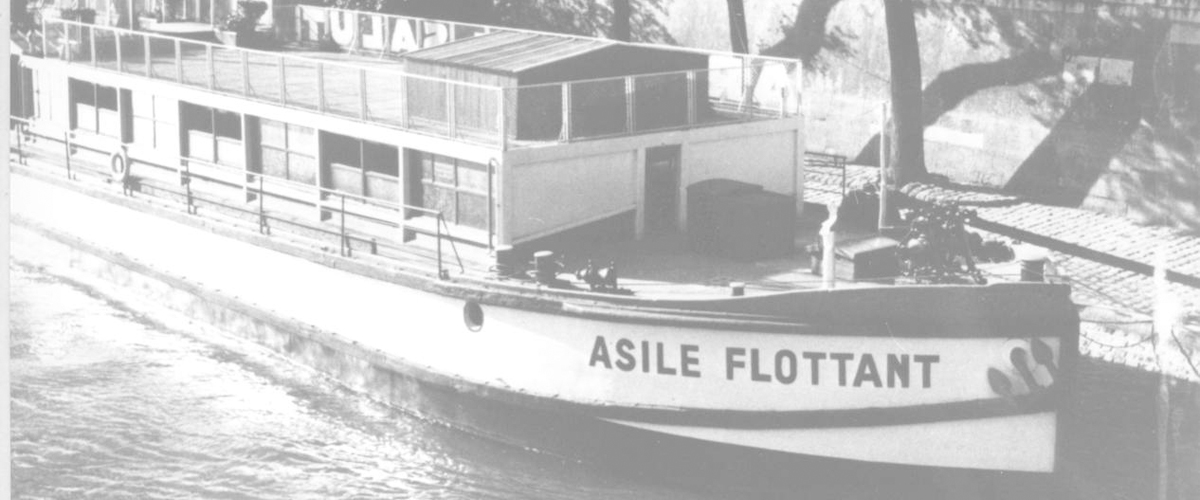
Subsequent History
The Asile Flottant did service until the beginning of the 21st century. However, despite the improvements made during its operation, the vessel ended up no longer satisfying accomodation regulations. After a last unsuccessful attempt to convert it into accommodation for homeless women, it was put up for sale by the Salvation Army in 2003 and bought back in 2006. Classified as a Historic Monument/Object in December 2008, the vessel sank on February 10 2018. Bought in August 2020, it was taken out of the water in October 2020. Since that date, studies as well as repair work have been under way with a view to its restoration.
